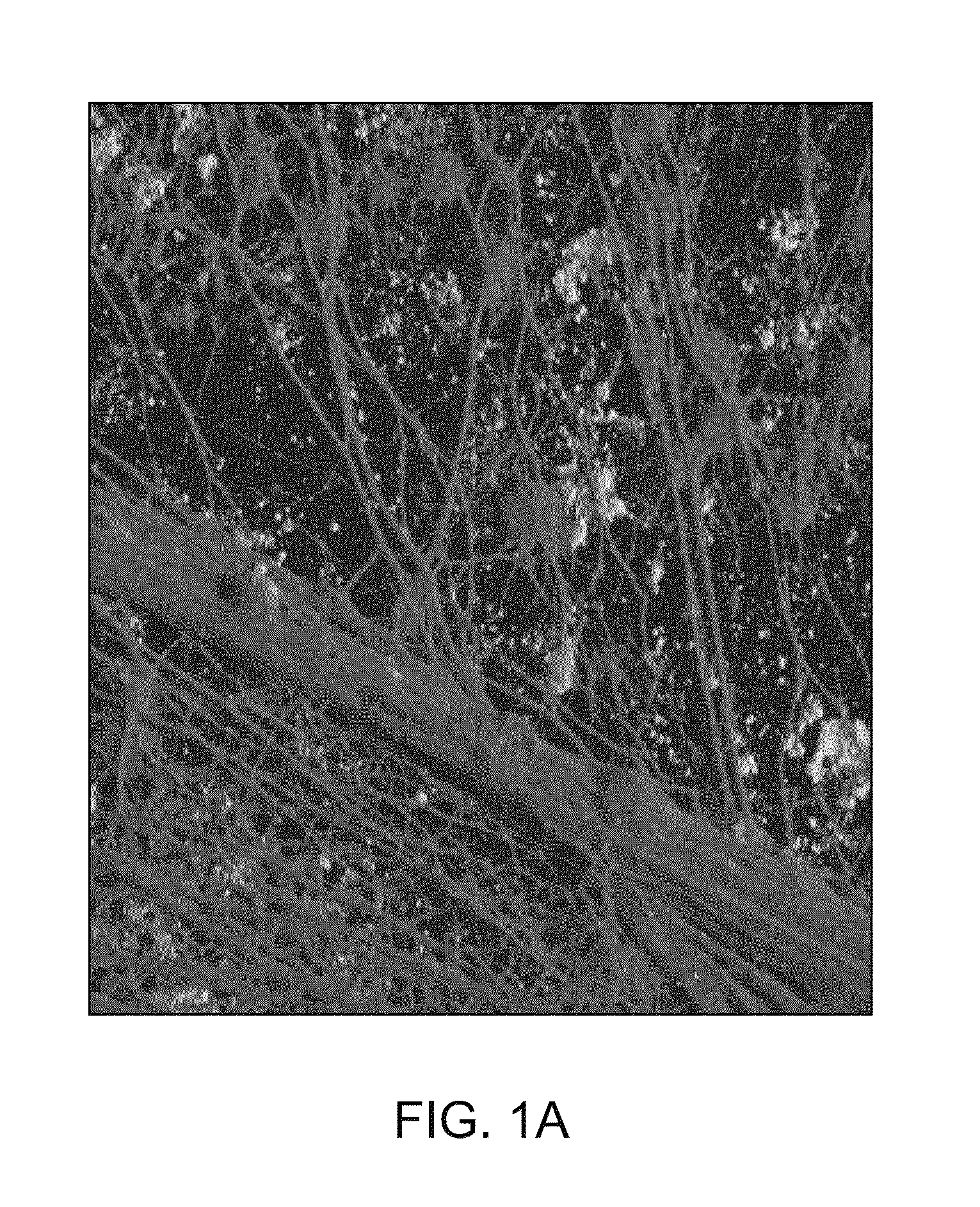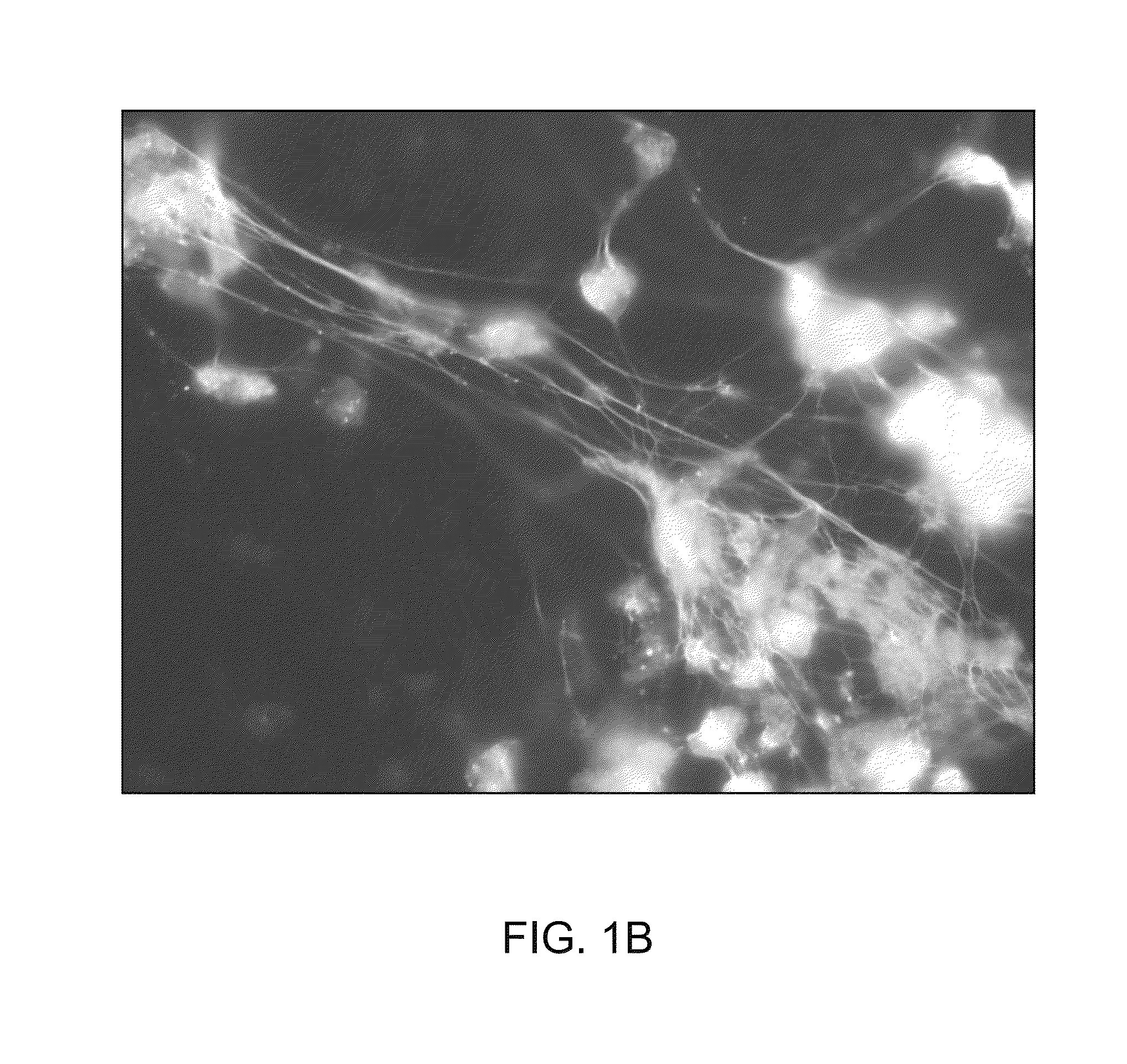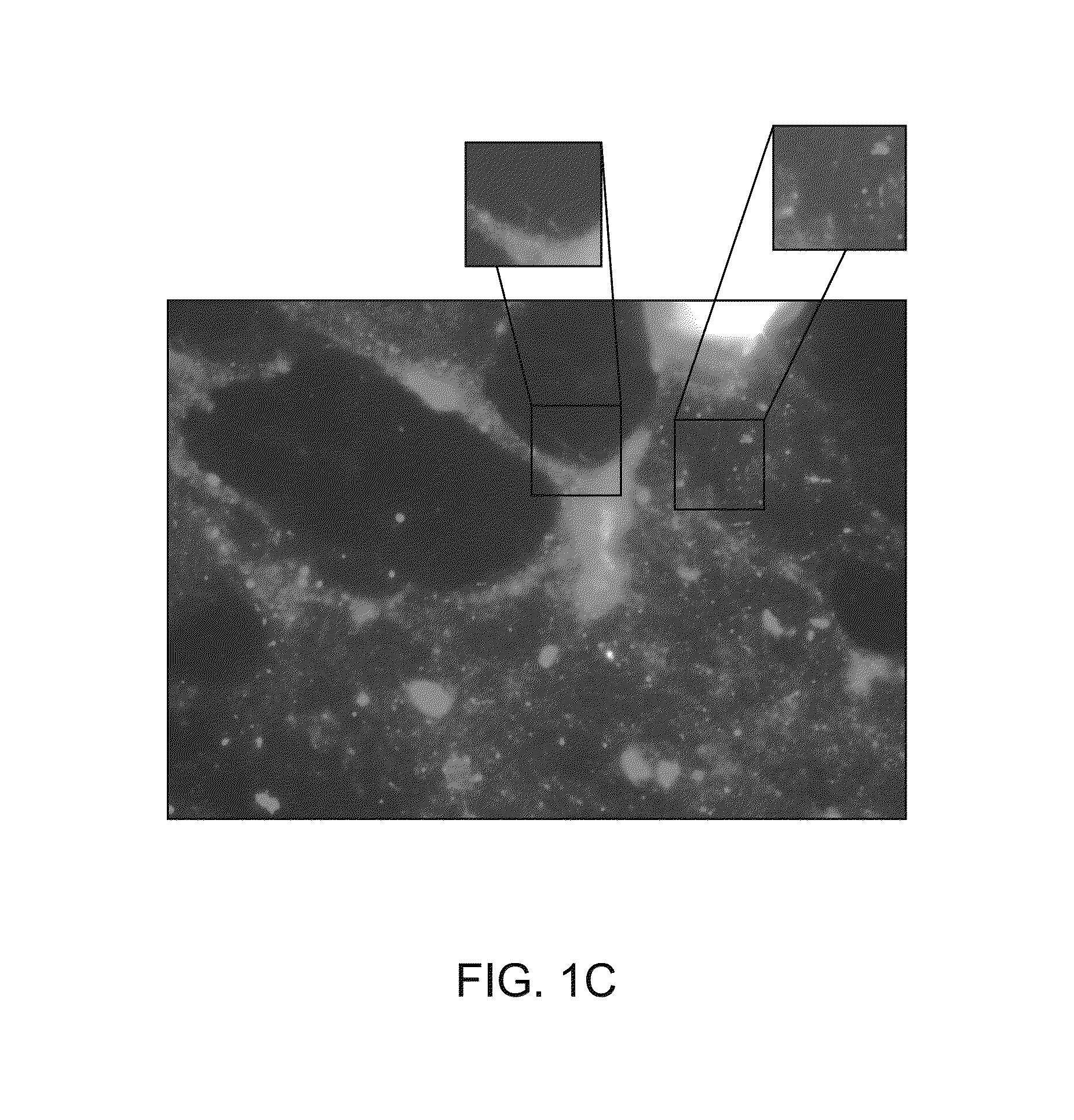Compositions and methods for the removal of biofilms
a biofilm and composition technology, applied in the field of compositions and methods for the removal of biofilms, can solve the problems of inability to naturally produce specific antibodies to family members, difficult and inability to clear infection from the body
- Summary
- Abstract
- Description
- Claims
- Application Information
AI Technical Summary
Benefits of technology
Problems solved by technology
Method used
Image
Examples
experiment 2
[0494]This experiment describes an in vitro model for reversal of an established biofilm in 8-well chamber slide. The materials used in this experiment were: Chocolate Agar; sBHI (BHI with 2 mg heme / mL and 2 mg b-NAD / mL); 8-well Chamber slides (Nunc* Lab-Tek* Fisher catalog #12-565-18); Sterile 0.9% saline; LIVE / DEAD BacLight Bacterial Viability Kit (Fisher catalog #NC9439023) and Formalin.
[0495]On day 1, NTHI was struck for isolation on chocolate agar. It was then incubated for 20 hrs at 37° C. and 5% CO2. The next day, bacteria were suspended in 5 mL equilibrated (37° C., 5% CO2) and optical density was adjusted to OD490=0.65 in sBHI. Bacteria was diluted 1:6 in equilibrated sBHI (1 mL bacterial suspension+5 mL sBHI). Bacteria was then incubated for 3 hours at 37° C. in 5% CO2, static (OD490 should be approx 0.65). Next, the bacteria was again diluted 1:2500 in equilibrated sBHI and 200 mL of the bacterial suspension was added to each well of the chamber slide. For dilution, 10 μL...
experiment 11
[0543]Members of the DNABII family are highly pleiotropic for multiple nucleoprotein systems including gene transcription, and moreover, are thus often essential. In contrast, both HU and IHF mutants have been generated in laboratory strains of E. coli and studied extensively. To determine what role IHF and HU have in eDNA formation, biofilms formed by E. coli strain MG1655 or its HU and IHF deficient derivatives were incubated with anti-IHF (prepared as described in Granston and Nash (1993) J. Mol. Biol., 234:45-59. As shown in FIG. 8, whereas the parental isolate, strain MG1655 produced a robust biofilm in vitro (Panel A), both HU and IHF mutant strains were less robust (Panels C and E, respectively). An HU deficient mutant yielded a biofilm that was approximately ½ the height of the wild type biofilm, whereas IHF deficient strains produced a biofilm that was approximately ⅔rds the height of the parental isolate. This result suggested that both proteins were involved in either the...
experiment 12
[0544]Whereas it was demonstrated in this application in vitro and in vivo that both anti-IHF and the use of IHF as an immunogen show utility in debulking biofilms and / or resolving biofilm disease respectively, it was unknown if debulking of NTHI biofilms with anti-IHF might also allow synergism when used in conjunction with other therapeutic modalities. To this end the ability to induce augmented structural destabilization of pre-formed NTHI biofilms was assessed when a sub-optimal concentration of anti-IHF was used along with one of each of three unique reagents. These three reagents include 1) a DNA degrading enzyme (DNaseI) known to be able to degrade an NTHI biofilm in vitro (but used here at a suboptimal concentration), 2) antisera to an outer membrane protein of NTHI that did not destabilize a pre-formed NTHI biofilm when used alone (anti-OMP P5) (data not shown), and 3) an antibiotic typically used as a first line choice in children with chronic and / or recurrent OM (amoxicil...
PUM
| Property | Measurement | Unit |
|---|---|---|
| distance | aaaaa | aaaaa |
| size | aaaaa | aaaaa |
| diameter | aaaaa | aaaaa |
Abstract
Description
Claims
Application Information
 Login to View More
Login to View More - R&D
- Intellectual Property
- Life Sciences
- Materials
- Tech Scout
- Unparalleled Data Quality
- Higher Quality Content
- 60% Fewer Hallucinations
Browse by: Latest US Patents, China's latest patents, Technical Efficacy Thesaurus, Application Domain, Technology Topic, Popular Technical Reports.
© 2025 PatSnap. All rights reserved.Legal|Privacy policy|Modern Slavery Act Transparency Statement|Sitemap|About US| Contact US: help@patsnap.com



